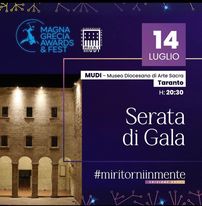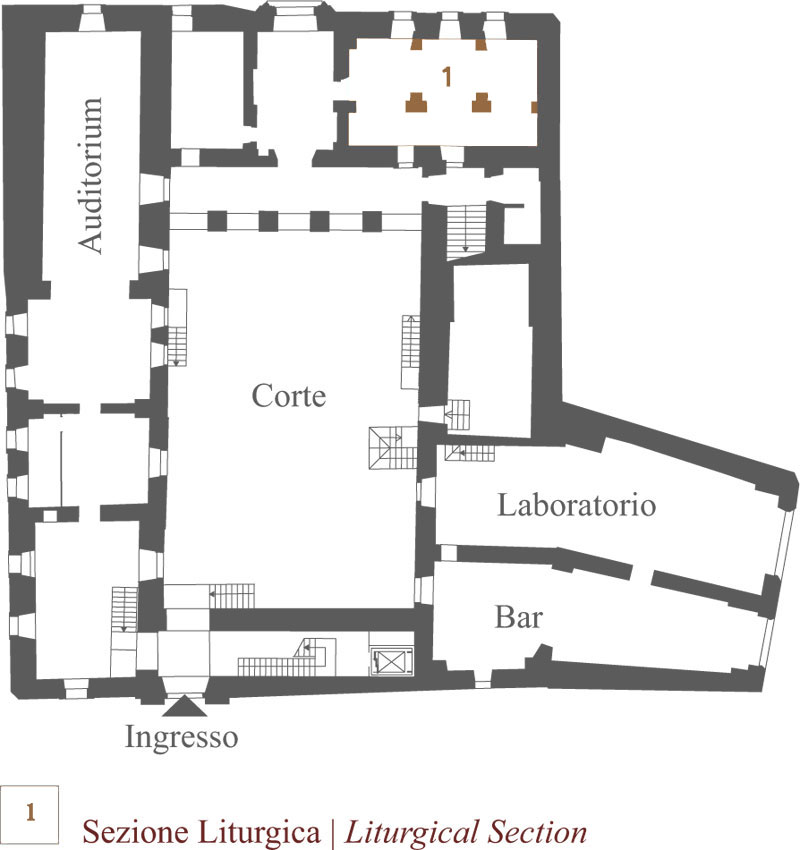Room 1
- Dettagli
- Categoria: Non categorizzato
- Pubblicato: Venerdì, 29 Agosto 2025 11:47
- Scritto da Francesco
- Visite: 255
Room 1
Tronetto
Italian manufacturing
XX century
Display throne Eucharistic
Golden metal
The throne for the Eucharistic Exposition is also called a small temple or residence because it
houses the monstrance with the consecrated host. It typically consists of a base or pedestal with a
white fabric or silk background or a gilded metal canopy, with a canopy sometimes supported by
columns. It is a portable sacred object, used solely for the exposition of the Eucharist.
Southern carver
XVIII century
Folding chair
Carved and gilded wood
Italian manufacture
XX century
Glorious card wallpaper
Gilded brass
Italian manufacture
XX century
Altar set: altar cross and altar candlesticks
Gilded brass, cast in the shape
Ferruccio Ferrazzi
1969
Preparatory model of the mosaic "Vortex of the Holy Spirit"
Wood, cardboard, tempera
Southern manufacture
XIX century
Holy altar stone
Marble
Southern manufacture
XIX century
Tabernacle door
Marble, embossed copper
Southern silversmith
XIX century
Incense holder boat
Embossed silver
Neapolitan silversmith
XIX century
Turibolo
Embossed, chisel and engraved silver
Italian manufacturing
1713-1725
Tray with bishop's coat of arms of Mons. Stella
Gilded silver, embossed and chiseled
Italian manufacturing
XIX century
Blister
Glass, molten silver, fire-applied decorations
Italian manufacturing
XIX century
Cruet with support
Glass, molten silver, fire-applied decorations
Italian manufacturing
XIX century
Cruet with support
Glass, molten silver, fire-applied decorations
Italian manufacturing
1750-1760
Bag
Gros de Tours liseré brocade a liage repris
Milanese silversmith
XX century
Chalice
Molten silver, gold and precious stones
Neapolitan silversmith
XIX century
Paten
Wrought silver and gilded
Milanese silversmith
XX century
Pyx
Molten silver, gold and precious stones
Southern manufacturing
XVIII century
Bucket and sprinkler
Silver-plated copper, cast brass
Italian manufacturing
XX century
Palmatoria or bugia
Silver-plated and embossed metal
Neapolitan manufacture
XVIII century
Jug and tray
Cast silver, turned, chiseled and embossed silver sheet
Italian manufacture
XX century
Monstrance
Golden metal
Italian manufacture
XVIII century
Conopeum of pyx
Gros de Tours brocade






